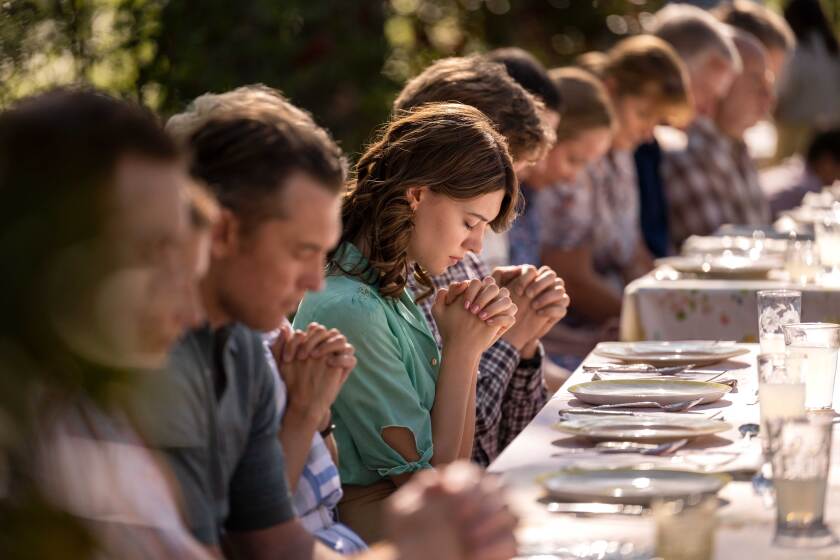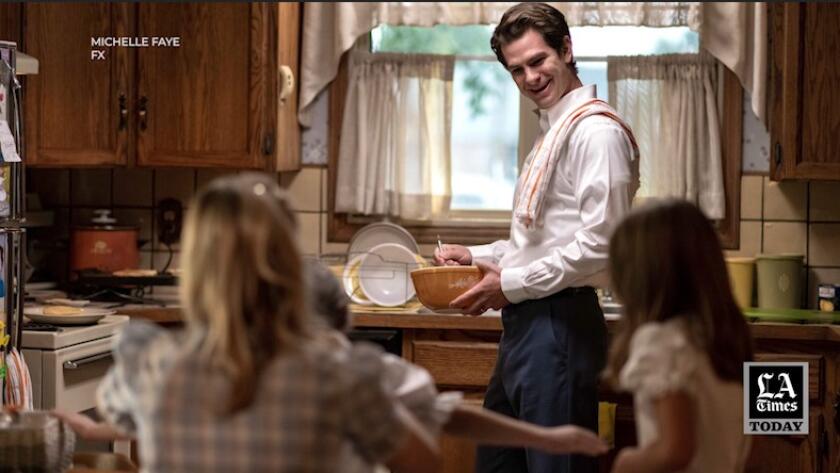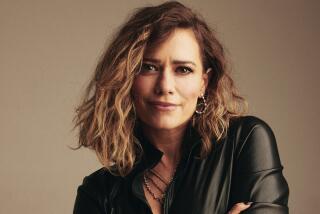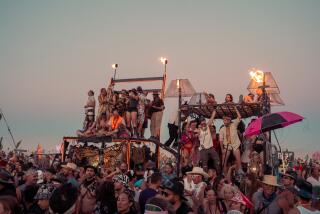Inside a new TV show’s extraordinary effort to re-create a secret Mormon ceremony

“Under the Banner of Heaven,” Hulu’s new true crime mystery, uses a gruesome 1984 murder to explore the dark side of religious belief and the sometimes bloody history of the Church of Jesus Christ of Latter-day Saints.
Based on Jon Krakauer’s nonfiction bestseller, the series sheds light on aspects of the faith that are rarely glimpsed by outsiders. Creator and showrunner Dustin Lance Black, a former member of the church, knew the series was likely to be scrutinized and spent years conducting his own research.
When it came to building this world visually, production designer Renee Read and costume designer Joseph La Corte also had their work cut out for them. Telling a story about a widely misunderstood religion that spans two centuries and a half-dozen or so states was not easy.
“Everyone was on the same page about being as detailed and accurate as humanly possible, and respecting the religion,” said La Corte. “People think this show is this bigoted attack [on the church], but it’s actually just telling them a true story that happened, as accurately as possible.” (The church has begun to discourage use of the term “Mormon” or the shorthand “LDS” and prefers to call its members Latter-day Saints.)
In ‘Under the Banner of Heaven,’ based on the book by Jon Krakauer, Dustin Lance Black delivers an unflinching portrait of the faith he grew up in.
Getting the details right was especially important in the third episode, “Surrender,” which premiered Thursday and depicts one of the most sacred and closely guarded rituals in the church, the temple endowment ceremony.
According to the church, the temple endowment is “a necessary step toward salvation and returning to Heavenly Father” available to “faithful and ready” church members over the age of 18. Church members are presented with “events that are part of the plan of salvation,” such as creation and the fall of Adam and Eve, and make a series of covenants with God.
This is not the first time the ceremony, which is closed to outsiders and the details of which are not publicly disclosed, has been depicted on TV: A 2009 episode of the HBO series “Big Love” dramatized the ceremony and provoked so much backlash the network issued an apology. There are also surreptitiously filmed videos of the ceremony available on YouTube. The church itself has sought to demystify aspects of the ceremony, which have been modified since the time depicted in “Under the Banner of Heaven.”
Still, the portrayal in the series is likely to anger some members of the faith, not only because it discloses closely guarded rites but because it also asks viewers to consider the connection between the ceremony itself and the atrocities carried out against Brenda.
““There are sensitivities around depicting what takes place in the temple, so it was important to all of us to get this as accurate as possible. That meant a lot of research, by wardrobe, by set design, by bringing in people who had been through those ceremonies in that exact room.”
Here’s how the makers of the series did it.
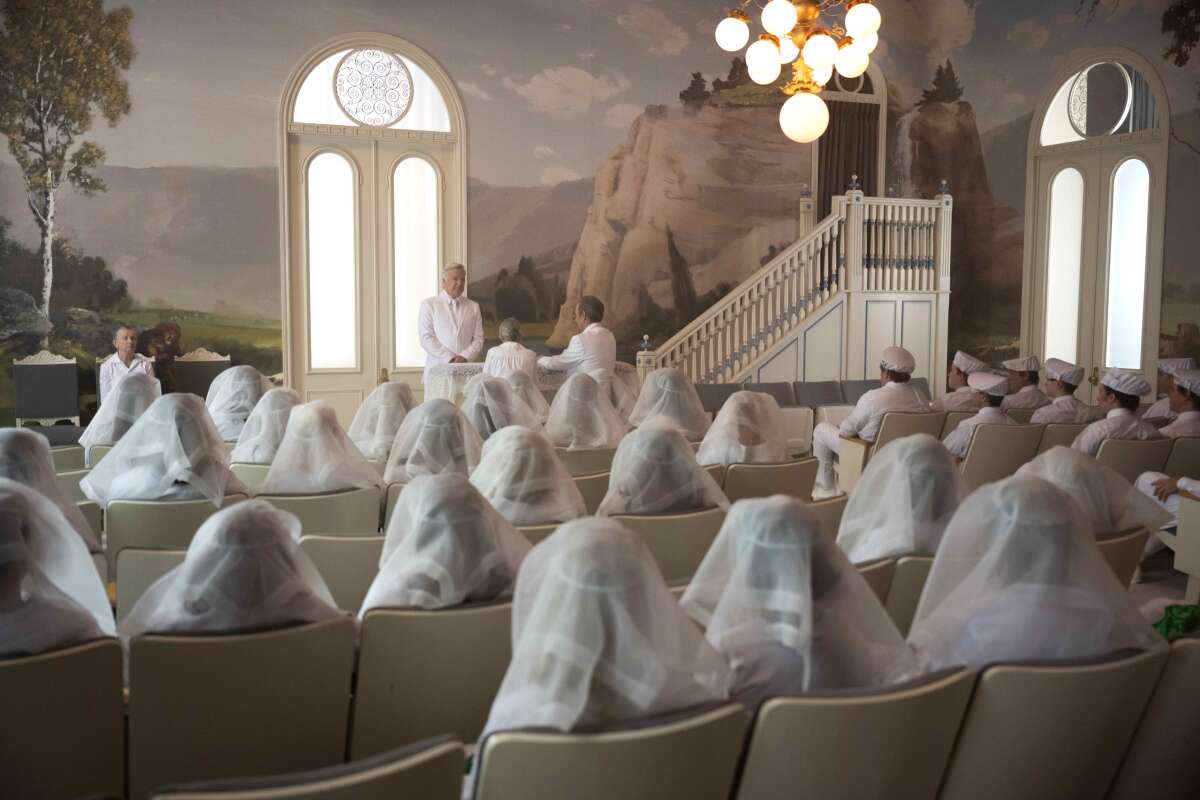
A ritual guarded ‘at the peril of your life’
In “Surrender,” Sarah Lafferty (Britt Irvin), a religious zealot, explains to Det. Jeb Pyre (Andrew Garfield) why she believes her recently murdered sister-in-law, Brenda, was a dangerous infidel. She does so using a story from Brenda’s wedding day.
In a flashback, we see Brenda (Daisy Edgar-Jones) at the temple as she is washed and anointed — or, as she puts it, “a woman older than Jesus’ sandals just put oil very, very close to my private parts” — before participating in what is known as the endowment ceremony.
Brenda is wearing a white veil and dress with a green apron, as are the women surrounding her. The men sit on the other side of the room in similar white attire, green aprons and white bonnet-like hats. A male temple officiant warns the participants about the sanctity of the ritual they are about to enact, saying, “Under no condition, even at the peril of your life, will you ever divulge them,” then guides them through a series of symbolic gestures.
Brenda, following his lead, raises her left hand while making a cutting motion across her throat with her right hand. The scene is intercut with Sarah explaining the doctrine of blood atonement — the idea that “according to Prophets Joseph and Brigham, there are some sins beyond repentance” that can only be cleansed through bloodshed.
“It was important for storytelling that we included it so that we understand the hand signals that are being taught to these brides,” Black said.
“The Real Housewives of Salt Lake City” adds a novel ingredient — Mormonism — to the usual pettiness, plastic surgery and conspicuous consumption.
To re-create these ceremonies, Black and his creative team leaned on the expertise of historical consultants Lindsay Hansen Park and Troy Williams and gathered firsthand accounts from people who had taken part in them during the time period depicted in the series.
For the temple sequence, La Corte had to re-create the robes of the holy priesthood, the sacred clothing worn by members of the church during the endowment ceremony. For women, this includes a white dress and veil worn with a pleated robe and sash; for men, a white shirt, tie, sash and hat with gathered seam reminiscent of a shower cap. Both men and women wear a green apron embroidered with a fig leaf pattern, to represent Adam and Eve. The white symbolizes purity and equality. (“The simple vestments combine religious symbolism with echoes of antiquity reflected in ancient writings from the book of Exodus,” according to a church video.)
La Corte and his team spent months digging and, using the few images and videos available online, pieced together prototypes for the men’s and women’s robes. Then two former members of the church sent La Corte their robes, allowing him to check the accuracy of the samples he’d developed. “We had them about 95% correct,” he said. From there, it was a matter of cranking out 80 or so of the ensembles, from head to toe.
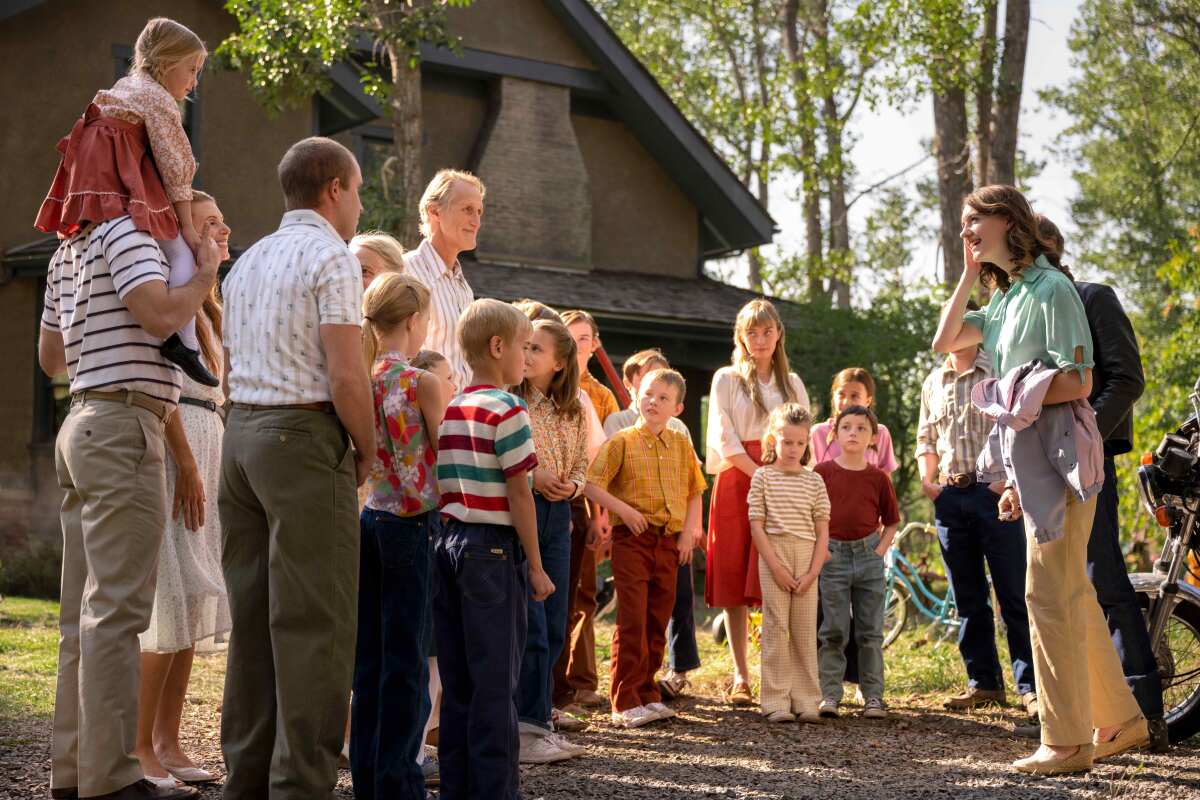
‘A tonal facsimile’ of the Salt Lake Temple
Meanwhile, Read and her team had to re-create the Telestial Room (also known as the World Room) in the Salt Lake Temple, where part of the endowment ceremony takes place. The room includes a 121-foot mural depicting a “dreary and lonely world” in the wake of Adam and Eve’s fall, said Read.
Her team created a custom, composite mural using elements from dozens of classical paintings at the Metropolitan Museum of Art and the Rijksmuseum. The result, she said, was “a tonal facsimile that the network lawyers could live with.”
They also custom-made the turn-of-the-century chandeliers and sourced theater chairs in Kentucky to match the kind in the room in the 1980s. The massive exterior of the temple was largely created using visual effects. (“The doors alone were going to cost us $100,000,” she said.)
Netflix’s “Unorthodox” recreates the customs of the Hasidic Jewish community in painstaking detail. We went behind the scenes to find out how they did it.
Insider sources for temple garments
La Corte also had to construct temple garments, the white underclothing worn by adult Latter-day Saints after they are endowed in the temple. Church members are encouraged to wear the garments at all times. (In a video released in 2015, the church tried to dispel some of the popular misconceptions around these items of clothing, explaining there is “nothing magical or mystical about temple garments.”)
These garments are designed and sold by the church and are thus difficult to procure if you are not a member. But through personal connections to a family with long-standing church ties, Williams and Park were able to track down a cedar trunk full of temple garments dating back many decades.
They provided La Corte with pictures and videos of the garments, which he used to create period-accurate underclothing for the cast.
La Corte explained that the garments changed from one piece to two piece in 1979, just before the events in “Under the Banner of Heaven,” so “we decided to play with the idea that some of the older characters were still wearing the one-piece.”
For some of the women in the cast, this commitment to authenticity led to some uncomfortable maneuvering in the bathroom. “It’s incredibly difficult because you have to hike up one leg and spin it around your waist so that you can sit,” he said. “Some of the women were not thrilled about having to use the restroom in the garments.” (Women in the contemporary church have been pushing for softer, more breathable garments.)
The garments are only fleetingly visible in “Under the Banner of Heaven” — as an outline under a cotton shirt or a sliver of white fabric peeking out from under a hem — but they were important for the actors getting into character.
“Daisy [Edgar-Jones] and Andrew [Garfield] said there’s a layer that you feel that you didn’t know you were going to feel having these garments on,” La Corte said.
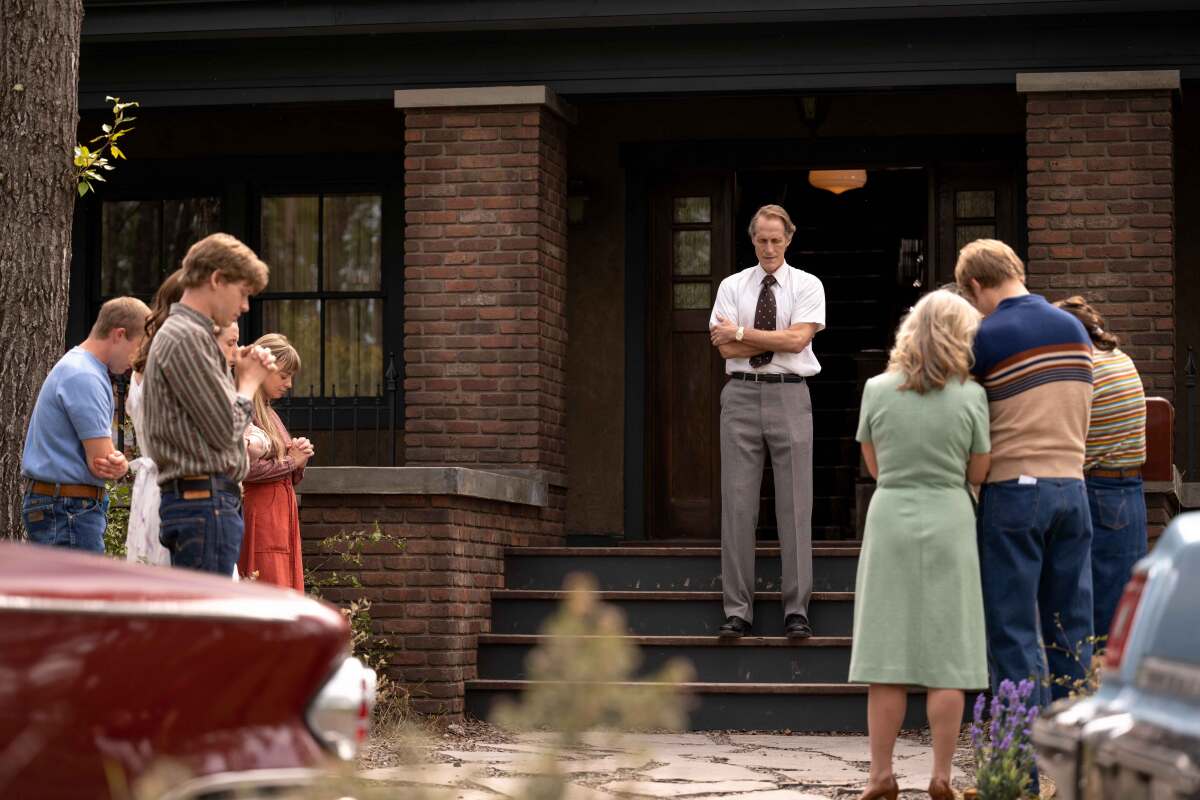
Finding the style of an ‘achingly American’ faith
“Under the Banner of Heaven” also paints a richly textured portrait of the everyday life of Latter-day Saints during the 1980s.
“The only way they knew about fashion or anything was from magazines, television, or the Sears and Roebuck catalog,” said La Corte. They were also “constantly five years behind, “ he said. “So even though we’re in the early ’80s, there’s still a lot of ’70s in there.” The Lafferty family also included six brothers, so there would have been a lot of hand-me-downs. Arguably the most fashion-forward character is Jeb Pyre’s wife, Rebecca (Adelaide Clemens), who unlike many other women in the series wears pants. “She was already trying to be a cool mom,” he said.
As for their homes, Read tried to mimic the austerity of Latter-day Saint temples and meeting houses. The series was filmed in Alberta, Canada, where there is a significant population of Latter-day Saints. Several crew members in the art department grew up in the church and shared family photo albums that were useful for research.
“There’s a modesty to the interior of their homes — they’re incredibly tidy, with very little artwork on the wall that isn’t symbolic. Everyone has at least one of the accepted, iconic pieces of [religious] artwork,” said Read, who hired painters to create lookalikes of the reproductions that might have been found in the homes of Latter-day Saints at the time, including a portrait of Joseph Smith by John Scott and biblically inspired artwork by Harry Anderson.
“We worked diligently to be faithful to the canon of imagery that is so central to the faith,” she said.
To furnish the homes, Read looked for older, American-made pieces from the 1920s through the 1940s, much of it sourced from rural sellers on Facebook marketplace. “Family tradition and inheritances are important” to church members, she said. “There’s a real respect in the community for craftsmanship and holding on to the past.”
A primary goal was to avoid European-inspired Midcentury designs.
“Something that I tried to keep at the forefront of my mind was that the Mormon church is achingly American, and we endeavor to be true to that.”
Watch L.A. Times Today at 7 p.m. on Spectrum News 1 on Channel 1 or live stream on the Spectrum News App. Palos Verdes Peninsula and Orange County viewers can watch on Cox Systems on channel 99.
More to Read
The complete guide to home viewing
Get Screen Gab for everything about the TV shows and streaming movies everyone’s talking about.
You may occasionally receive promotional content from the Los Angeles Times.
